What is a Fuse?
What is Fuse?
A fuse is a device that is designed to protect electrical circuits from damage caused by overcurrent or short circuit conditions.
A fuse typically consists of a metal wire or filament that melts when the current flowing through it exceeds a certain threshold level. This melting of the wire causes an open circuit, which interrupts the flow of current through the circuit, thereby preventing damage to the equipment or wiring.
Fuses come in different sizes and current ratings, and they are typically used in conjunction with other protective devices, such as circuit breakers and surge protectors, to provide a multi-layered approach to circuit protection. Fuses are commonly used in household and industrial applications, including electrical panels, appliances, and electronic devices.
Construction & Working of a Fuse
A typical fuse consists of a metal wire or filament, usually made of copper, silver, or aluminum, that is housed in a glass or ceramic casing. The wire or filament is called the fuse element, and its diameter and length determine the fuse's current rating.
When a current flows through the fuse, the fuse element heats up due to its electrical resistance. The heat generated by the current causes the fuse element to melt and break the circuit, interrupting the current flow. The melting of the fuse element is intentional and designed to protect the circuit and its components.
The current rating of the fuse determines the amount of current that can flow through the fuse before the fuse element melts. If the current exceeds the fuse's rating, the fuse element will melt, and the circuit will be broken.
Fuses are available in various types, such as fast-acting, slow-blow, and resettable fuses. Fast-acting fuses are designed to break the circuit quickly when the current exceeds the rating. Slow-blow fuses are designed to tolerate brief current surges and can handle a higher current for a short period. Resettable fuses are designed to automatically reset after they cool down and can be used repeatedly.
Types of Fuses
There are several types of fuses available in the market, each designed to meet specific applications and requirements. Here are some of the most common types of fuses:
Cartridge Fuses
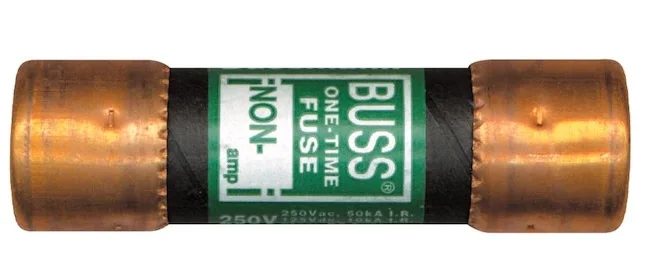
Cartridge fuses are a type of electrical safety device designed to protect electrical circuits from overcurrents or short circuits. They consist of a metal or ceramic tube that contains a fuse element, which is a thin wire or filament made of a material that melts when exposed to excessive current.
Cartridge fuses are typically used in high-current applications, such as in industrial or commercial settings. They come in various sizes and current ratings, and they are designed to be easily replaced when they blow out.
It's important to note that cartridge fuses should only be replaced with fuses of the same type and rating, and they should be installed by a qualified electrician. Using the wrong type or rating of fuse can result in equipment damage or even electrical fires.
Blade Fuses
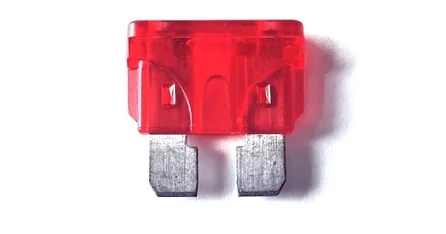
Blade fuses are a type of electrical fuse commonly used in automotive and other electrical systems. They are called blade fuses because they have a blade-shaped body that fits into a slot in a fuse holder.
Blade fuses typically consist of a plastic body with two metal blades at the bottom. The blades are usually made of zinc, copper, or silver and are designed to carry the electrical current. The fuse element itself is a thin strip of wire or metal that melts and breaks the circuit when an electrical overload occurs. The fuse element is enclosed in a transparent plastic housing, which allows you to see if the fuse has blown.
Blade fuses come in different amperage ratings, usually ranging from 1 amp to 40 amps or higher. The amperage rating is typically printed on the top of the fuse body. It is important to use the correct amperage fuse for your application, as using a higher amperage fuse can lead to damage or even fire.
Blade fuses are easy to install and replace, as they simply slide into the fuse holder. They are also relatively inexpensive and widely available, making them a popular choice for automotive and other electrical systems.
Glass Fuses
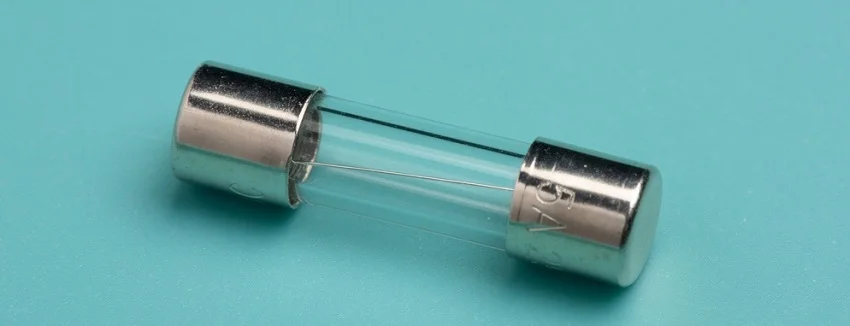
Glass fuses are a type of electrical fuse that are commonly used in household appliances and electronic devices. They consist of a thin glass tube with metal end caps that hold a fuse element, usually a thin wire or filament. When an electrical overload occurs, the fuse element heats up and melts, breaking the circuit and protecting the device from damage. Glass fuses come in different amperage ratings, typically ranging from a few milliamps to several amps, and are easily replaced by simply unscrewing the fuse cap and inserting a new fuse with the same rating. While glass fuses have been largely replaced by newer fuse types like blade fuses and circuit breakers, they are still widely used in some applications due to their simplicity, low cost, and reliability.
Ceramic Fuses
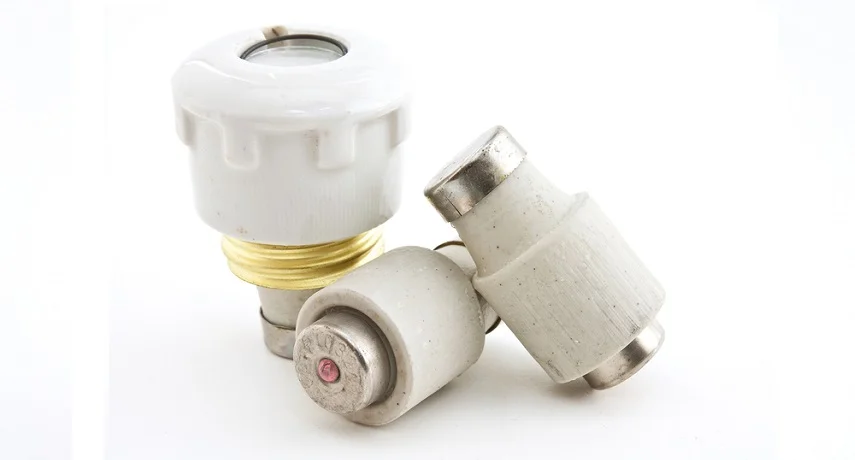
Ceramic fuses are electrical safety devices that are designed to protect electrical circuits from overcurrent. They are made of ceramic material and consist of a metal conductor that is encased in the ceramic body. When an overcurrent flows through the fuse, the metal conductor inside the fuse melts, which interrupts the current flow and protects the circuit from damage. Ceramic fuses are commonly used in household appliances, automobiles, and industrial machinery. They are known for their durability, high voltage ratings, and ability to withstand high temperatures. Additionally, they are less likely to explode or ignite compared to other types of fuses, making them a safe and reliable choice for many applications.
Resettable Fuses
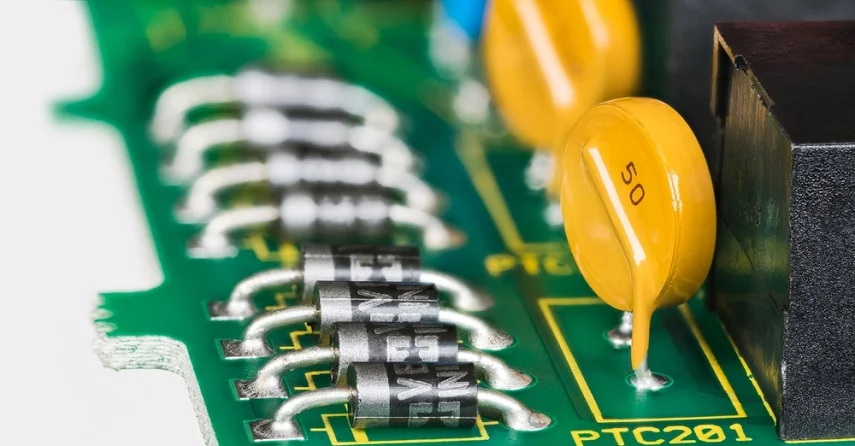
Resettable fuses, also known as polymeric positive temperature coefficient (PPTC) devices or self-resetting fuses, are electrical components that can protect electronic devices from overcurrents or short circuits. Unlike traditional fuses, resettable fuses do not need to be replaced after they have been activated. Instead, they rely on a polymer material that has a high resistance at normal operating temperatures. However, if an overcurrent or short circuit occurs, the heat generated by the current flow will cause the polymer material to expand and lower its resistance, effectively limiting the current flow. Once the current is removed, the polymer will cool down and return to its high-resistance state, allowing the circuit to resume normal operation without the need for manual intervention. Resettable fuses are commonly used in a variety of consumer electronics, power adapters, and battery chargers due to their ease of use and low cost.
Time-Delay Fuses
Time-delay fuses, also known as slow-blow fuses or time-lag fuses, are electrical safety devices that are designed to protect electrical circuits from overcurrents. They work by providing a delay in the time it takes for the fuse to blow when an overcurrent occurs, allowing the circuit to briefly sustain a current overload without tripping the fuse. This feature is especially useful for circuits that experience high inrush currents at startup, such as motors or transformers, where a regular fast-blow fuse would be too sensitive and would cause nuisance tripping. The delay is achieved by using a special fuse element that is made of a material that takes longer to heat up and melt than a regular fuse element. Time-delay fuses are commonly used in industrial equipment, power supplies, and other applications that require reliable and consistent protection against overcurrents.
High Voltage Fuses
High voltage fuses are electrical safety devices that are designed to protect electrical systems from overvoltage or overcurrent conditions. They are specifically designed for use in high voltage applications, typically 1000 volts or higher, such as power distribution networks, switchgear, and other high voltage equipment. High voltage fuses work by interrupting the current flow in the event of an overcurrent or short circuit, thereby protecting the electrical system from damage. They are typically larger and more robust than low voltage fuses and can handle much higher currents and voltages. High voltage fuses come in various types and designs, including expulsion fuses, current limiting fuses, and hybrid fuses, and are selected based on the specific application and voltage requirements. They are critical components of high voltage systems and must be installed and maintained in accordance with strict safety standards.
Semiconductor Fuses
Semiconductor fuses, also known as semiconductor protection fuses or semiconductor circuit protection fuses, are electrical safety devices that are designed to protect semiconductor devices, such as diodes, transistors, and thyristors, from overcurrent conditions. They are specifically designed to interrupt the current flow in a semiconductor device before the device itself is damaged, thus preventing costly repairs or replacements. Semiconductor fuses are fast-acting and operate quickly to prevent catastrophic failure of the semiconductor device, which can result in damage to other components or even fire hazards. They are typically rated for low voltage applications and are available in a variety of sizes and styles, including SMD (surface mount device) fuses and through-hole fuses. Semiconductor fuses are commonly used in electronic equipment, including computers, telecommunication equipment, and industrial control systems, where the protection of semiconductor devices is critical for the proper operation and longevity of the equipment.
Surface Mount Fuses
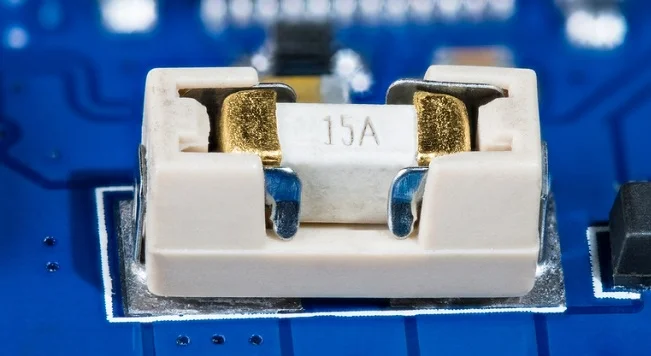
Surface mount fuses, also known as SMD (surface mount device) fuses, are electrical safety devices that are designed to protect electronic circuits from overcurrent conditions. They are designed to be mounted directly onto the surface of printed circuit boards (PCBs) and are commonly used in electronic equipment where space is limited. Surface mount fuses are typically small and compact, with low profile designs that allow them to be easily integrated into electronic circuits. They are available in a variety of sizes, ratings, and materials, including ceramic, glass, and polymer, to meet the specific needs of different applications. Surface mount fuses provide reliable and efficient protection against overcurrent conditions and are commonly used in consumer electronics, automotive electronics, telecommunications equipment, and industrial control systems. They are designed to be easily replaceable and can be reflow soldered onto the PCB during assembly or replaced by a technician during maintenance or repair.
Medium Voltage Fuses
Medium voltage fuses are electrical safety devices that are designed to protect electrical equipment and systems from overcurrent conditions in medium voltage applications, typically ranging from 1000 to 38000 volts. They are specifically designed to interrupt the current flow in the event of an overcurrent or short circuit, thereby protecting the equipment and system from damage. Medium voltage fuses are available in a variety of types, including expulsion fuses, current limiting fuses, and backup fuses, and are selected based on the specific application and voltage requirements. They are typically larger and more robust than low voltage fuses, and are designed to handle higher currents and voltages. Medium voltage fuses are commonly used in power distribution networks, switchgear, transformers, and other high voltage equipment. They play a critical role in protecting medium voltage systems from damage and must be installed and maintained in accordance with strict safety standards.
Choosing the Right Fuse for Your Application: Factors to Consider
Choosing the right fuse for your application is critical to ensure safety and protect equipment from damage. There are several factors to consider when selecting a fuse, including:
The Importance of Proper Fuse Installation and Maintenance
Proper fuse installation and maintenance are crucial for the safe and efficient operation of electrical systems. Fuses are designed to protect electrical circuits by interrupting the flow of current when the circuit is overloaded or short-circuited. When a fuse blows, it indicates that there is a fault in the system that needs to be addressed. However, for fuses to work effectively, they need to be installed and maintained correctly.
During installation, fuses must be correctly rated for the system they are protecting. Using the wrong type of fuse can lead to overloading or underloading of the circuit, which can cause damage to the system or create a safety hazard. Fuses must also be installed in the correct location and orientation to ensure they function properly when a fault occurs.
Maintenance of fuses involves regular inspection to ensure they are in good condition and not damaged or corroded. Fuses that are damaged or corroded may not operate correctly, which can compromise the safety of the electrical system. It is also important to replace fuses that have blown promptly to avoid downtime and prevent further damage to the system.
Proper fuse installation and maintenance are critical for ensuring the safety and reliability of electrical systems. By following recommended guidelines for fuse selection, installation, and maintenance, system owners can minimize the risk of electrical fires, equipment damage, and personal injury.
Common Fuse Failures and How to Prevent Them
Electrical fuses are devices designed to protect electrical circuits from overloading, short-circuiting, and other electrical faults. However, they can fail due to various reasons, leading to potential safety hazards, equipment damage, and downtime. Here are some common electrical fuse failures and how to prevent them:
Electrical fuse failures can lead to potential safety hazards, equipment damage, and downtime. By understanding the common causes of fuse failures and taking appropriate preventive measures, you can help ensure that your electrical systems operate safely and reliably.
Fuse vs Circuit Breaker: Which One Should You Use?
When it comes to protecting electrical circuits from overload, two common options are fuses and circuit breakers. Fuses are essentially thin wires that melt when they become too hot, interrupting the flow of electricity and protecting the circuit. Circuit breakers, on the other hand, use a switch mechanism that can be manually or automatically triggered to interrupt the flow of electricity.
The choice between fuses and circuit breakers ultimately depends on your specific needs and preferences. Fuses are typically cheaper and simpler than circuit breakers, making them a good choice for smaller electrical systems or applications where cost is a major consideration. They are also often more reliable in high-temperature environments, such as in industrial settings.
Circuit breakers, on the other hand, offer several advantages over fuses. They are generally more convenient to use, as they can be reset after they trip rather than needing to be replaced like fuses. They also offer more precise protection, as they can be designed to trip at specific levels of current, whereas fuses may vary slightly in their performance from one unit to the next. Additionally, circuit breakers can be more easily integrated into smart home systems, allowing for remote control and monitoring.
Ultimately, the choice between fuses and circuit breakers will depend on your specific needs and circumstances. If you are working with a smaller electrical system or need to keep costs down, fuses may be a good option. If precision protection, convenience, and integration with smart home systems are important factors, circuit breakers may be the better choice.
Understanding Fuse Ratings: Amps, Voltage, and Interrupting Capacity
Fuse ratings are important parameters to consider when selecting the appropriate fuse for a particular application. The three key factors to consider are the amperage rating, the voltage rating, and the interrupting capacity.
It is important to select the appropriate fuse ratings based on the specific requirements of the circuit or equipment. If you are not sure which fuse ratings to use, consult with a qualified electrician or engineer to ensure that the fuse provides adequate protection.
How to Test an Electrical Fuse: Methods and Tools
Testing an electrical fuse is an essential safety measure that ensures the proper functioning of the circuit and prevents potential hazards. There are different methods and tools to test an electrical fuse, and the following are some of the most common ones:
It is important to note that testing an electrical fuse while the circuit is energized can be dangerous and should be avoided. Always turn off the power to the circuit and remove the fuse before testing. Also, be sure to use the appropriate tools and methods for the type of fuse being tested.
Summary
Fuses play an important role in protecting electrical systems from overloads and short circuits. Like any other component of an electrical system, fuses can wear out over time and may need to be replaced to ensure that the system continues to function safely and effectively. The signs of wear and tear on fuses include blown fuses, discoloration, burnt smell, and intermittent issues with the electrical system. Regular inspection of fuses as part of routine maintenance can help ensure the safety and reliability of an electrical system. By paying attention to these signs, homeowners and businesses can take the necessary steps to replace fuses in a timely manner and keep their electrical systems functioning properly.













